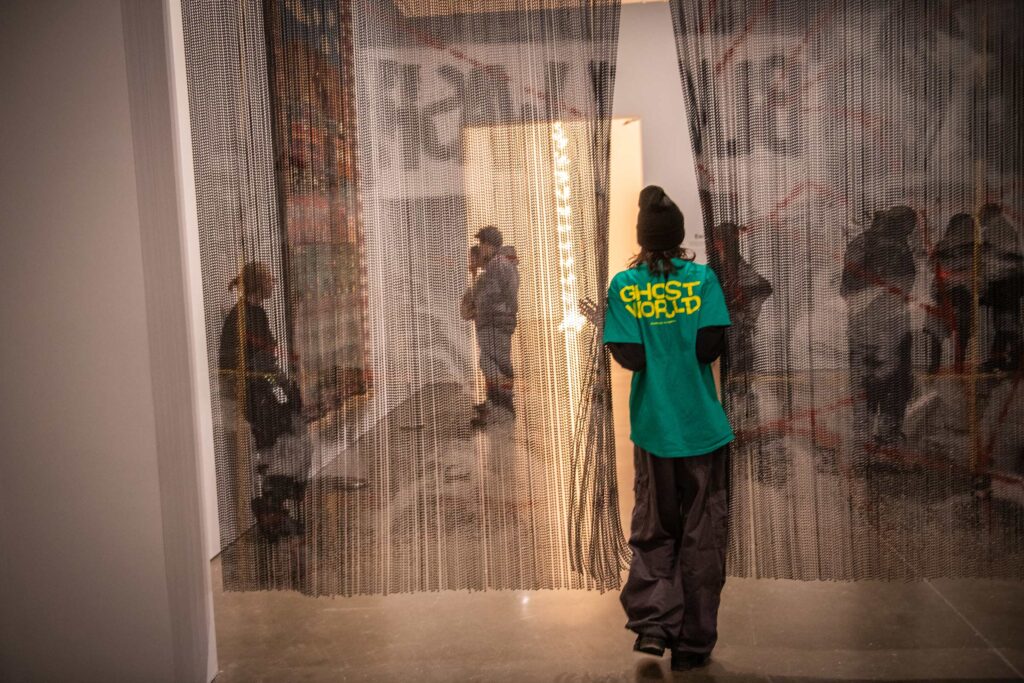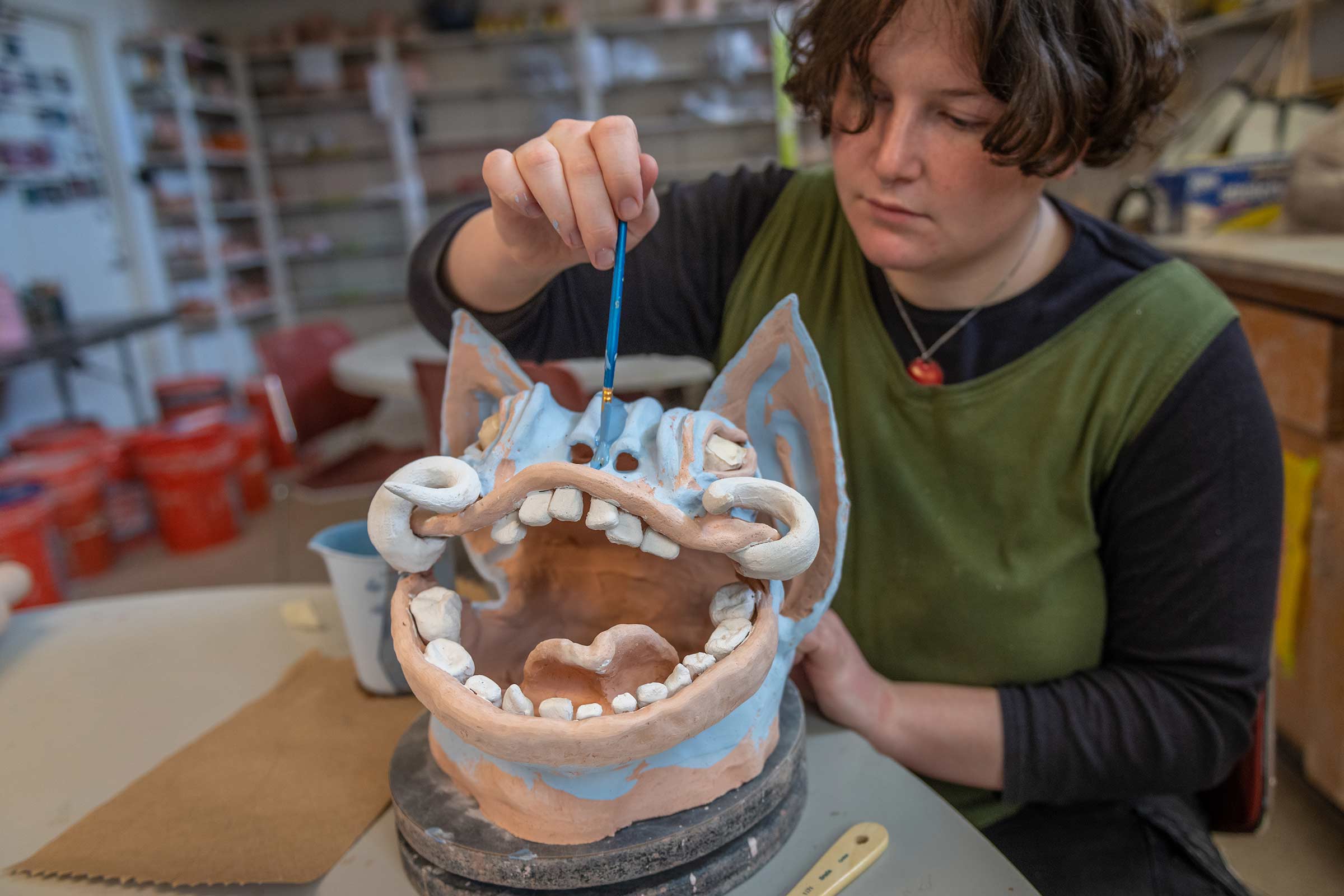Engaging your eyes, mind, and hands in studio art is about developing your creative skills by working closely with our experienced practitioner-faculty. You’ll express your individual perspective on the world around you through drawing, painting, photography, printmaking, sculpture, video, and graphic design.


Why study Studio Art at Clark?
- Make art in a supportive liberal arts environment that not only provides options for double-majoring, but also offers a variety of perspectives to fuel your creativity.
- Create and collaborate in the wider context of Clark’s Visual and Performing Arts Department (V&PA), a tight-knit community that includes students majoring in art history; media, culture, and the arts; music; screen studies; studio art; and theatre arts.
- Immerse yourself in the Worcester arts scene, connect with local artists, and show your work in a professional gallery setting at the annual ArtsWorcester show.
- Gain inspiration — and/or intern — at museums such as the Worcester Art Museum; Boston’s world-renowned Museum of Fine Arts, Institute of Contemporary Art, and Isabella Stewart Gardner Museum; the DeCordova Sculpture Park and Museum in nearby Lincoln; and the Museum of Russian Icons in Clinton.
Curriculum
Courses in the studio art major offer you an opportunity to engage in the study and practice of visual language. Since art is a way of communicating human experience, you learn both to read this language and to visually represent your own ideas. Training in artistic methods and media is provided in the context of intellectual inquiry and critical analysis.
Frequently asked questions
What can I do with a minor in studio arts?
At Clark you’ll get more than a great education; you’ll also be prepared for a long, productive career and life of consequence. And once you’ve completed your degree, you can join other Clark alumni who have gone on to work for great organizations and attend some of the best graduate schools in the world.
What skills will I learn?
- Visual communication using various media and tools
- Creative problem-solving
- Employing art as an agent of change
- Aesthetic discernment
What studios, galleries, and facilities are available?
The campus home for studio art majors is Clark’s Traina Center for the Arts, a renovated 19th-century Romanesque Revival building that contains studios for design, painting, drawing, and printmaking; darkrooms for analog photography; and a digital photography lab, equipped with state-of-the-art software and fine-art pigment-based color printers that can accommodate large format images. On-campus opportunities for additional involvement in artistic activity, including ceramics, are available at the University Center’s Craft Studio. Just over a mile from campus is C. C. Lowell, which has been providing art supplies to local artists since 1852.
Can I earn an academic achievement award in studio art?
Patricia M. Plamondon Undergraduate Award in Visual and Performing Arts
The Patricia M. Plamondon Award is given to juniors and seniors who have demonstrated their talent in and commitment to the arts and for whom the award will serve to enhance their studies, research, or project-related travel. The award is made annually by a vote of the full-time faculty of the Department of Visual and Performing Arts.
Is there a studio arts honors program?
Students with a strong commitment to intensive study, and who receive departmental approval, can elect to undertake a senior honors thesis project, which culminates in an exhibition of work in the Schiltkamp Gallery — along with honors consideration — in the final semester. The honors thesis in studio art requires the creation of an original project, with a supporting paper, under the mentorship of a faculty member. Examples of supporting papers include:
- An Exploration of Art History, Memory, and Contextualization (a discussion of how to read an artwork and its formal presentation as a primary text)
- Reflections on Dreaming (a meditation of the translation of an abstract idea into a tangible work of art)
- Stand Still, Close Your Eyes. (an exploration of the conventions of photographic portraiture across time)
Be a force for change.
Come study at a small research university with a strong liberal arts core.

